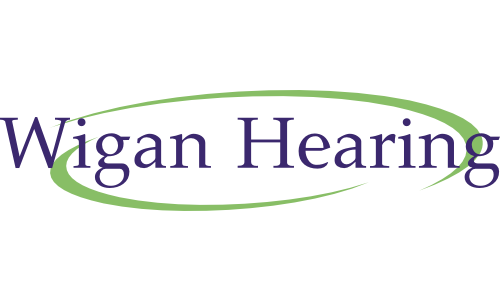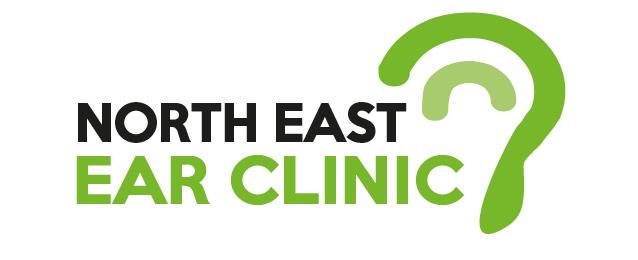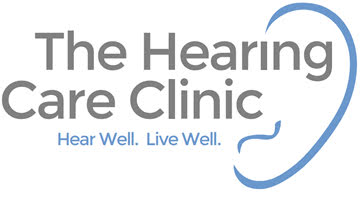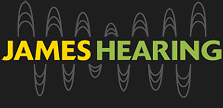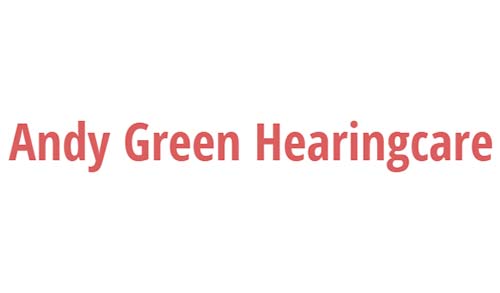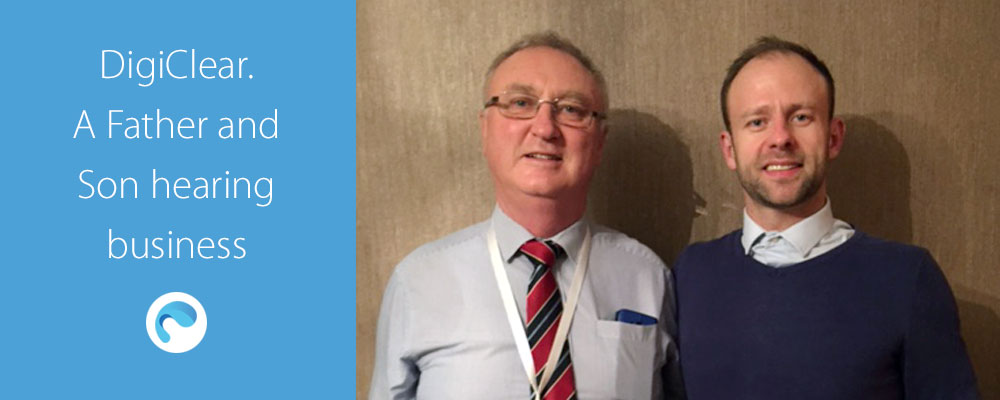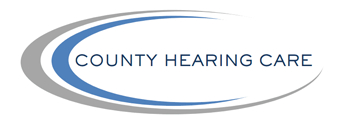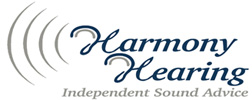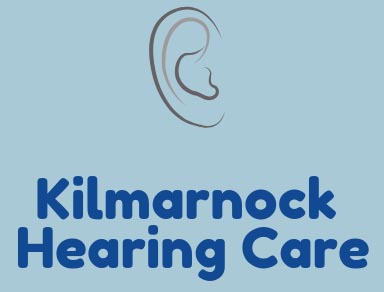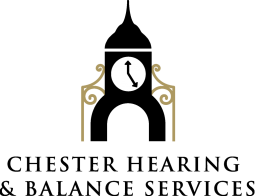Earwax Removal
Professional Ear Cleaning services
What professional ear cleaning services are available?
Earwax Removal Services, Microsuction, Irrigation & Syringing
Earwax removal as a service has grown exponentially in the last few years. More and more Independent hearing health professionals have trained and become qualified to remove earwax using several methods. Many felt that this was a valuable service to offer their customers and a natural extension of the services they provide. The advent of this service seems to have come at a perfect time as more and more people find it difficult to access the service in GP surgeries. But what exactly is the service offered and how does it work?
Before we launch at it, let's answer a few common questions:
What is ear wax?
Ear wax is a natural mix of secretions and dead skin found in the ear. It is not a bad thing; it helps to protect the ear against dust, dirt and bacteria. Ear wax (Cerumen to be official!) is made up of skin cells, dust and oily secretions from the sebaceous and ceruminous glands in the ear canal. The secretions lubricate the ear canal and prevent it from becoming too dry. Your ear wax is probably not the same as someone else's! The makeup of ear wax changes from person to person based on diet, age and race.
What can cause earwax buildup?
Some people just suffer from regularly blocked ears. It can be simply that they overproduce ear wax naturally. Causes of earwax buildup can be
- Overproduction of ear wax
- Narrow ear canals
- Hairy ear canals (it's like a jungle in there!)
- Dry earwax, (not much moisture in the secretion as you get older)
- Swimmers ear, bony growths in the ear canal can block the progress of ear wax
- A tight or hard ear canal bend
- You keep putting damned cotton buds in your ear! (nothing smaller than your elbow in your ear)
- Wearing hearing aids (sometimes can cause ear wax build up)
- Wearing in-ear headphones (same as above)
Symptoms of ear wax build up
You are deaf, deaf I tell you!!!! Well, no actually, you might not be. But it is one symptom that can show up. Here are all the symptoms of hearing loss:
- Earache, as it builds up, it can press against the ear canal causing pain, yes ear wax can cause discomfort!
- Hearing loss, it can deliver to you the gift of hearing loss, especially if you have just gone swimming or had a shower
- Itchiness in the ear (can be caused by other things though like dry skin)
- Dizziness, a spinning sensation without the use of Gin (lovely Gin)
- Tinnitus, surprisingly enough it can give you a sense of buzzing or ringing in the affected ear
What can you do about ear wax build up?
If earwax isn't causing you problems, leave it alone. The ear (that amazing thing) is self-cleaning and once the process is not interrupted the wax should drop out. Sometimes though, probably because you have been fiddling with it, ear wax may build up in the canal. Generally, once the build-up starts, it will just continue unless it is washed out. Eventually, the ear wax plug will grow to fill the ear canal.
This is when you start to have problems. Usually, the first indication of it for you is when water gets into the ear during swimming or showering. This often causes the ear wax to swell. This blocks the ear canal, and you know about it immediately. If the wax build-up has got to the stage where it is causing deafness, problems with hearing aids (usually whistling), or is uncomfortable, it needs to be removed. It is time to think about having your ears professionally cleaned.
There are several types of ear drops that you can use to loosen and soften ear wax. The solutions can include olive oil, almond oil, bicarbonate of soda and hydrogen peroxide. Here is the thing, they might not be suitable for you. If you have had a perforation of your eardrum in the past, ear drops aren't a good idea.
Can you remove ear wax at home?
Yes no worries, while you are at it, get the black and decker out and cut off that leg that has been bothering you. It will be grand! Sorry, my humour gets away from me sometimes. In all honesty, you can; there are kits available to do it. There are also oils and sprays available to loosen built up or impacted ear wax. They can work, but you need to follow the instructions very carefully. Don't mess around with your ear canal. Both it and your eardrum are sensitive; if you damage your eardrum, there may be long-term consequences for your hearing. Professional earwax removal ensures that there is the least chance possible for something to go wrong.
Can You Use Hydrogen Peroxide to Remove Earwax?
Yes, you can, but you need to be very careful with it. You need to use diluted hydrogen peroxide and follow the instructions. There are home remedies where you can use hydrogen peroxide mixed with water to clean ear wax, don't do it! The proper solution needs to be 3 to 4% hydrogen peroxide, why bother trying to measure it out when you can buy the drops over the counter.
You can read all about hydrogen peroxide and using it for earwax removal here
The Best Way To Use Ear Wax Removal Drops
Ear wax removal drops very rarely remove the ear wax. Most drops are oil based, and all they will do is soften the ear wax. If you are going for professional ear wax removal, well then softening the ear wax is a good idea. So how should they be used? You are better off trying to get an ear wax oil that has a spray top, spraying the oil into your ear a couple of times makes sure that the entire wax plug gets coated in oil. This ensures that it all gets a chance to soak up the oil and soften.
Using Ear Drops
If you can't get a spray bottle, then you need to make sure that the drops come into contact with the wax plug. That means lying on your side and dropping a couple of drops into your ear. The oil needs to maintain contact with the wax plug, so you need to rest there for about ten to fifteen minutes. As I said, the spray type is a lot easier, and you can give your ears a couple of sprays throughout the day.
Why you should have your ear cleaned professionally
Simply put, your ear canal is delicate as is your eardrum, if you make the mistake of putting anything in your ear, you run the risk of damaging either or both. Many people every year burst or perforate their eardrum by sticking all sort of implements in there, usually cotton buds. They are called cotton buds, not earbuds; they are designed for babies noses, not ears. Please don't put anything smaller than your elbow in your ear.
You should not try to use cotton buds to remove earwax from your ear canal, all it will do is push it towards the eardrum. It can cause you, even more, problems and make it more difficult to remove. Leave earwax removal to a qualified specialist who can see what he or she is doing.
I think you should always use earwax softening drops for four or five days before an appointment no matter what procedure it is. Icky gooey earwax is easier to remove which means easier for you as well. Try and get a spray type oil instead of the usual drops, it coats the wax and the canal without having to lie still for twenty minutes.
What's the best form of ear cleaning?
It depends really, I think irrigation is amazing. It washes everything out of the ear canal and leaves it sparkly clean. However, it's not suitable for everyone. For instance, if you have a perforation of your eardrum or if you have had major surgical work done on your middle ear and mastoid, well then irrigation isn't really for you. Many people think micro-suction is excellent as a form of ear wax removal. There is no mess and little fuss. Again though, there are things you need to think about before getting it done. As you move down this page I will explain the different forms of ear wax removal and look at the pros and cons. I will also answer the question are these procedures safe.
Do Hopi Ear Candles Remove Ear Wax?
Just no, your chakras don't need re-aligning! Hopi ear candling seems to have become quite popular again, but not only do they not work, but they are also dangerous. You can read more about Hopi ear candles and whether they work or not here. You can also read a full earwax removal question and answer article here.
Earwax blockage symptoms
Like I said earlier, there are a few symptoms that you may feel if you are suffering from earwax blockage of your ear canal.
- a feeling of fullness in the ear
- the sensation of hearing everything muffled
- mild tinnitus
If any of these symptoms sound familiar, then you should have your ear canal or canals checked.
Microsuction Wax RemovalIrrigation Wax RemovalEar Syringing Manual Ear Wax RemovalUK Ear Wax SpecialistsIrish Ear Wax Specialists
Looking For Ear Wax Removal in The UK or Ireland
Find An Earwax Removal Specialist in Your Area
Professional Ear Cleaning Services
The predominant forms of ear cleaning offered are irrigation and microsuction. Most Independent hearing health professionals would offer either one or both of these services. Ear syringing is not undertaken any longer, the process proved to have too many problems and caused too many complications. More often than not it also didn't remove the wax. Let's take a look at those services in a more detailed manner.
Microsuction Earwax Removal
Microsuction ear wax removal is undertaken with a specialist medical grade vacuum pump that gently sucks the earwax out of the ear. The procedure is undertaken using a special microscope or microscope glasses called Loupes. This allows the professional to clearly see exactly what they are doing. No liquids are used during the procedure, this procedure is seen as the gold standard in earwax removal and it is also believed to be the safest form of earwax removal available.
Initially, they will ask you a series of questions related to ear health and any experiences you have had with earwax removal. They will then check your ear canals to ensure that there is, in fact, earwax present that needs to be removed. They will then move onto the removal process using a special attachment on the suction tube to suck out all of the wax. Once finished they will then again check your ears to ensure that they are clear. Most professionals will then provide a scan of your hearing to get a baseline of your hearing ability for their records.
Why microsuction?
As I said, micro suction is one of the safest and most comfortable methods of ear cleaning. There is no mess or fuss and no liquids are introduced to the ear canal during the procedure. The process is usually undertaken in a few minutes and it very rarely needs to be repeated a second time to get all of the wax, making it a same day service. The fact that the professional can clearly see what is happening in the ear canal during the procedure also makes it exceptionally safe.
Contra-indications to micro-suction earwax removal
There really isn't any as such, if you have existing tinnitus the noise of suction may exacerbate it. Normally this is a short-lived issue but you need to know it may happen. There is no other real reason than that for not undergoing microsuction.
Problems caused by micro-suction ear wax removal
occasionally the pumps used makes people uncomfortable because of the noise. Sometimes when a hard piece of wax is being removed from the ear canal wall it may pull a bit of skin with it. It can give a bit of a pinch and cause a very slight bleed. When it happens the professional will explain what happened. At the end of the procedure, the professional will normally use a spray of oil to coat the ear canal which normally eases any discomfort and protects the grazed area.
Is microsuction ear wax removal safe?
It has come to our attention that there are some questions about the safety of micro-suction for ear wax removal. In fact, there are a couple of studies related to the process, but that is a problem, it is really only a couple of studies. One of the things that some people have mentioned is the onset of tinnitus and even the onset of hearing loss as a result of undergoing micro-suction ear wax removal. I have done a lot of research into it and I have found very little evidence that supports the claims. I don't doubt the veracity of the people who make those claims, but looking at the studies and searching the journals and internet they are very rare. You can read the full answer to the question is micro suction ear wax removal safe here. In general, ear wax removal by micro-suction is a safe procedure, however, as with any medical procedure, there are things that may go wrong. The risks are as follows:
- Damage to or infection of the skin of the ear canal or the eardrum
- The procedure is noisy and may cause a temporary shift in your hearing thresholds
- The procedure may start or aggravate any existing tinnitus
- The procedure may cause temporary dizziness or discomfort
Preparatory steps for microsuction
There really isn't any, although you probably should use wax softener for a few days before your appointment. This will soften the wax around the ear canal and ready it for removal. Many people believe that micro-suction can be done without any drops before hand, and it can. However, according to the evidence we have, it will be more comfortable if you have used drops beforehand. In the study Aural microsuction for wax impaction: survey of efficacy and patient perception a study that was undertaken with 159 patients. It was found that although a few people suffered from some pain and or vertigo, "Aural microsuction is well tolerated. Side effects are mild, and the prior use of cerumenolytics appears to further reduce their severity".
What happens during a microsuction ear wax removal appointment?
Microsuction wax removal appointments usually last about thirty minutes dependent on the wax build-up and whether it needs to be performed on one ear or two. The procedure is as follows:
- Assessment of the wax build up and some ear health questions
- Removal of wax using the microsuction equipment
- Post-procedure assessment to ensure all wax is cleared and a healthy ear is observed
- Short scan test of hearing to assess hearing health
The actual process is simple enough, using either a microscope or loupes (glasses with microscope lenses attached) the professional will look through a specula into your ear. They will then use a specialist microsuction tool to suck the wax out. It can be a little loud, especially when the canula sucks a bit of wax through it or if a bit of wax gets stuck on the tip of it (think about what a blocked hoover sounds like, the same sort of thing). All in all, though the procedure is comfortable and is normally over in a few minutes.
Sometimes, because of the consistency of the wax or the age of it, the professional may not be able to remove it all in one session. They may ask you to use eardrops for a few days and come back. For me, I think using eardrops (preferably an ear spray, works better) for a few days before the procedure is a good idea. It softens the earwax and icky gooey earwax is a joy to remove.
Microsuction Ear Wax Removal Across The UK and Ireland
Find An Independent Hearing Aid Centre in Your Area
Arrange a consultation with a trusted Independent hearing healthcare professional in your area
Irrigation Earwax Removal
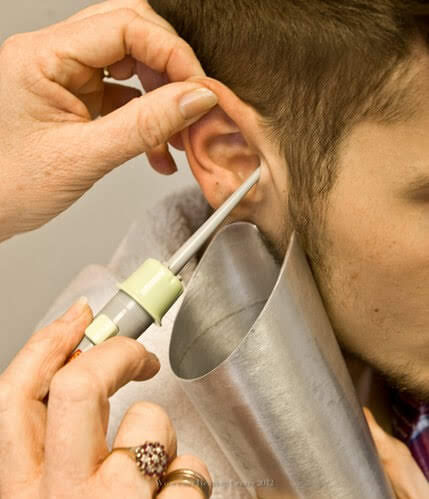 The second method of earwax removal often offered is the ear irrigation method of wax removal. This is my favourite way to remove earwax and it is a very safe method of earwax removal. It is performed with a spray type ear wash machine designed for the medical setting. Obviously, from the name, a liquid is introduced into your ear canal during the procedure. The process of the appointment is similar to the microsuction appointment. Initially, they will ask you some questions in relation to your medical history and any experiences you have had before with earwax removal.
The second method of earwax removal often offered is the ear irrigation method of wax removal. This is my favourite way to remove earwax and it is a very safe method of earwax removal. It is performed with a spray type ear wash machine designed for the medical setting. Obviously, from the name, a liquid is introduced into your ear canal during the procedure. The process of the appointment is similar to the microsuction appointment. Initially, they will ask you some questions in relation to your medical history and any experiences you have had before with earwax removal.
Once that is finished they will check your ear canals for the presence of wax before moving onto the removal process. The irrigation solution is carefully warmed to body temperature, this is important and you will see the professional carefully checking the temperature of the liquid. This is done to prevent any dizziness as any other temperature than body temperature may cause temporary vertigo.
They will use the spray type ear washer to gently stream water into the ear. The procedure is pretty simple and comfortable, the professional will pull the external ear upwards and back gently, this straightens out the ear canal. They will place a container under the ear to be washed to collect the liquid. They will then aim the nozzle of the sprayer into the canal slightly upwards and backwards so that the water flows along the roof of the ear canal.
This ensures that the water stream is not aimed at the eardrum at any time. The solution enters the canal, helping to break down the wax and will flow out of the canal along its floor taking any debris with it. The solution flows into the container with the removed wax. The irrigation procedure may need to be repeated a couple of times, this really depends on the hardness and age of the wax in the canal. When the wax has been completely removed they professional will use a special mopping apparatus to dry out the ear canal. This ensures that the ear is dry and there is no opportunity for bacteria to grow in the canal.
Why irrigation?
Some people like irrigation, it is quite comfortable and it really cleans out the canal. The solution gets everywhere in the canal removing all traces of wax or dirt even off the eardrum. It also tends to be cheaper than microsuction earwax removal as a service.
Contra-indications to irrigation earwax removal
There are a few contraindications to irrigation earwax removal, if you have an ear infection you should not have the procedure. If you have a perforation of your eardrum or have a history of perforations of your eardrum you should not have the procedure. If you have a history of dizziness you should ensure that you tell the professional. So the contra-indications are as follows:
- Perforation of the eardrum
- History of a Mastoid operation
- Repaired eardrum
Preparatory steps for irrigation earwax removal
For irrigation to work the first time it is important that you soften the earwax, softening it before the procedure is undertaken will ensure that it is successful. You should use oil for a few days before removal to soften and prepare the wax for the procedure. You should drop or spray your oil into your ear at night just before bed allowing it to work overnight.
Is irrigation ear wax removal safe?
If you have no contra-indications to the procedure well then yes, I would have to say it is. The water pressure is completely regulated as is the temperature. There is very little that can go wrong during the procedure. There is a possibility of an infection developing if the ear isn't dried out properly but it is rare.
What happens during an irrigation ear wax removal appointment?
This appointment may last between forty minutes to an hour and a half, it depends on the wax hardness and whether the procedure needs to be performed on one ear or two. If you haven't softened the earwax enough the procedure will probably have to be repeated.
- Assessment of wax build-up and ear health questionnaire
- Removal of wax via low-pressure irrigation
- Dry mop of the ear canal
- Post-procedure assessment to ensure all wax is cleared and a healthy ear is observed
Manual Ear Wax Removal
Manual ear wax removal is often undertaken when the ear wax is closer to the mouth of the ear canal. In fact, even if you are undergoing irrigation or microsuction ear wax removal, the professional will often use manual removal methods as well. Manual removal of ear wax can be undertaken with specialist tools such as a Jobson's Horn, a wax hook or a special forceps.It's easy, usually quick and it shouldn't cause any issues for you.
Ear Syringing
Ear syringing is a well-known form of ear cleaning and is probably the first type that many think of when they have an ear wax problem. However, ear syringing as a wax removal procedure has been pretty much dropped as a service for many years by most medical professionals.
What happens during ear syringing?
It is a pretty simple process, basically a large syringe is filled with warm water and it is sprayed into the ear canal in the hope that it washes the ear wax out.
The problem with ear syringing
The problem is that there is no pressure control on the syringe so the pressure of the water entering the ear canal is not regulated. If the person undertaking the procedure is ham fisted in any way, they could introduce the water to the ear canal at a pressure level that could cause real damage.
Is ear syringing dangerous?
The answer is a resounding yes, it was found to have too many associated issues and has been pretty much discontinued. The issues were identified in a study that was undertaken in Edinburgh quite a long time ago and it found to be that the procedure didn't work very well, that there was a high chance of gaining an ear infection and that in some cases there was a chance of the process causing an eardrum perforation. It was decided on the evidence delivered by the study that the process was not safe enough, at this stage, most healthcare professionals moved to irrigation earwax removal. The problems caused by ear syringing were detailed as follows:
- failure of wax removal 29% of the people studied
- otitis media (mid-ear infection) 17% of the people studied
- perforation of the eardrum 15% of the people studied
- and trauma to the external auditory meatus (ear canal) 11% of the people studied
In 2017, the National Institute for Health and Care Excellence (NICE) released new directions on the ear wax removal method of ear syringing. They advised that ear syringing in the traditional manner, (using a large syringe to pump water into the ear), is potentially harmful and should no longer be used. NICE recommends that all medical practitioners should instead use ear irrigation which uses an irrigation machine that introduces water under controlled pressure or micro-suction using a low-pressure suction machine.
Can I do ear syringing at home?
Of course you can, the question I would ask you is if you want to take the chance of causing damage? There are plenty of home ear syringing kits avaiable in chemists across the world. Normally they consist of a a bulb type syringe which you fill with water. You then squeeze the bulb to introduce the water to your ear canal and hopefully wash out the ear wax. The possible problems are the same as with professional ear syringing, too much pressure and you are going to do damage, and you can do real long-term damage.
Our Earwax Removal Specialists
UK Ear Wax Removal Specialists
Barbour One, The Clervaux Exchange, Jarrow, Tyne And Wear, NE32 5UP
iCare Opticians,
6 Barters Walk, High Street,
Pinner, Middlesex,
HA5 5LU
TK Impex HV Thomas Pharmacy,
81 Mill Lane, West Hampstead,
London, NW6 1ND
Suite 15, Building 80, Churchill Square,
Kings Hill, West Malling,
ME19 4YU
Archway Health Hub, Lubenham Hill,
Market Harborough LE16 9SZ
Room 215, John Eccles House,
Robert Robinson Avenue,
Oxford Science Park,
Oxford, OX4 4GP
51 Broad Street,
Chipping Sodbury,
Gloucestershire, BS37 6AD
Ground Floor Front Right Hand Wing,
2 Park House, Station Square,
Coventry, CV1 2FL
Exmoor Medical Centre, Oldberry House,
Fishers Mead, Dulverton,
Somerset, TA22 9EN
Longfield Consulting Rooms,
Stow Hill, Newport,
Gwent, NP20 4HB
Moredon Medical Centre,
Ferndown Suite, 1st Floor,
Moredon Road, Swindon,
SN2 2JG
Taunton Nuffield,
Staplegrove, Taunton, Somerset,
TA2 6AN
Ground Floor, Tewkesbury Community Hospital, Barton Road, Tewkesbury, GL20 5GJ
J C Bird Optician, 41-43 Surrey Street, Sheffield, S1 2LG
10 Florence Walk, Bishops Stortford, Hertfordshire, CM23 2NZ
Station House Medical Centre, 66 Station Rd, Chingford, E4 7BA
Crompton Opticians, 6 Common Lane, Culcheth, Warrington, Cheshire, WA3 4EG
Chester Wellness Centre, Wrexham Road, Chester, CH4 9DE
Irish Ear Wax Removal Specialists
Unit G, Stillorgan Shopping Centre, Stillorgan, County Dublin
BBH Limited, Creative Spark, Clantygora Ct, Muirhevnamor, Dundalk, County Louth, A91 HF77
Looking For Hearing Aids or A Hearing Test?
We can arrange a consultation with a trusted Independent hearing healthcare professional in your area

